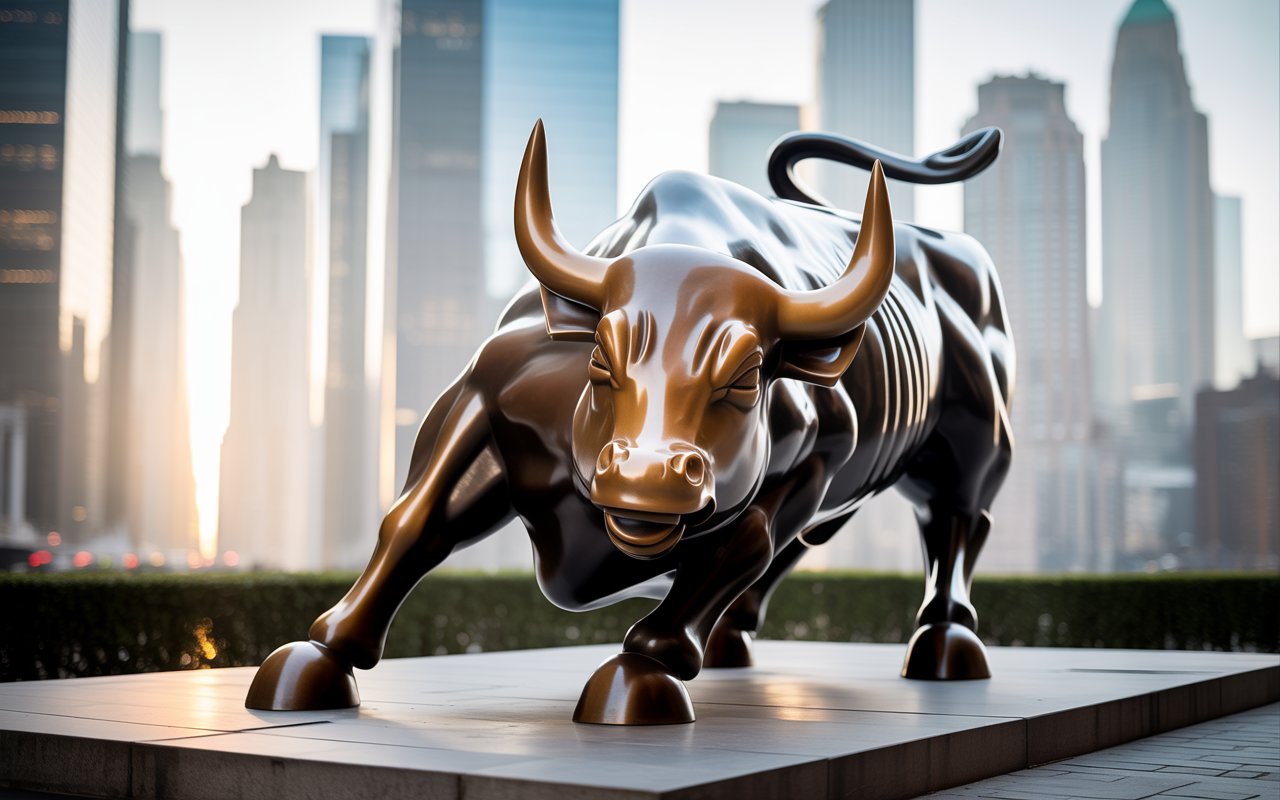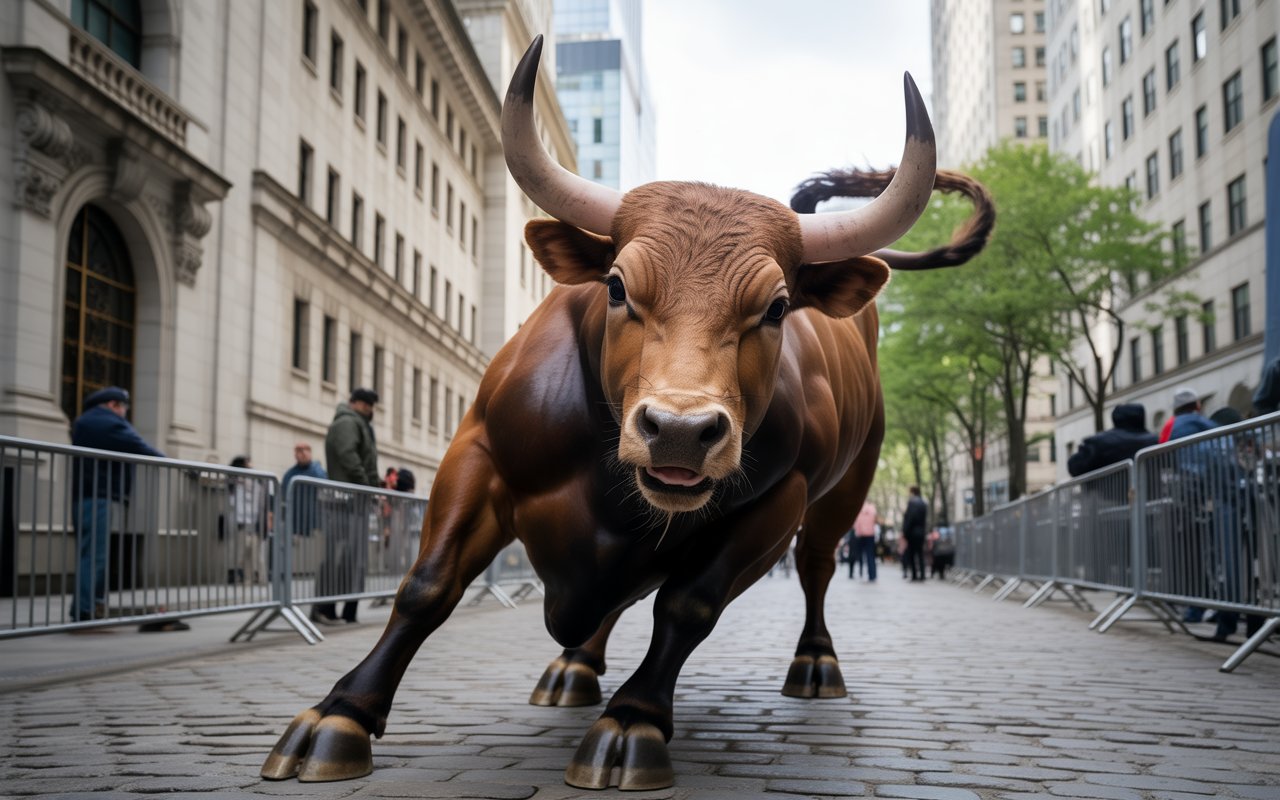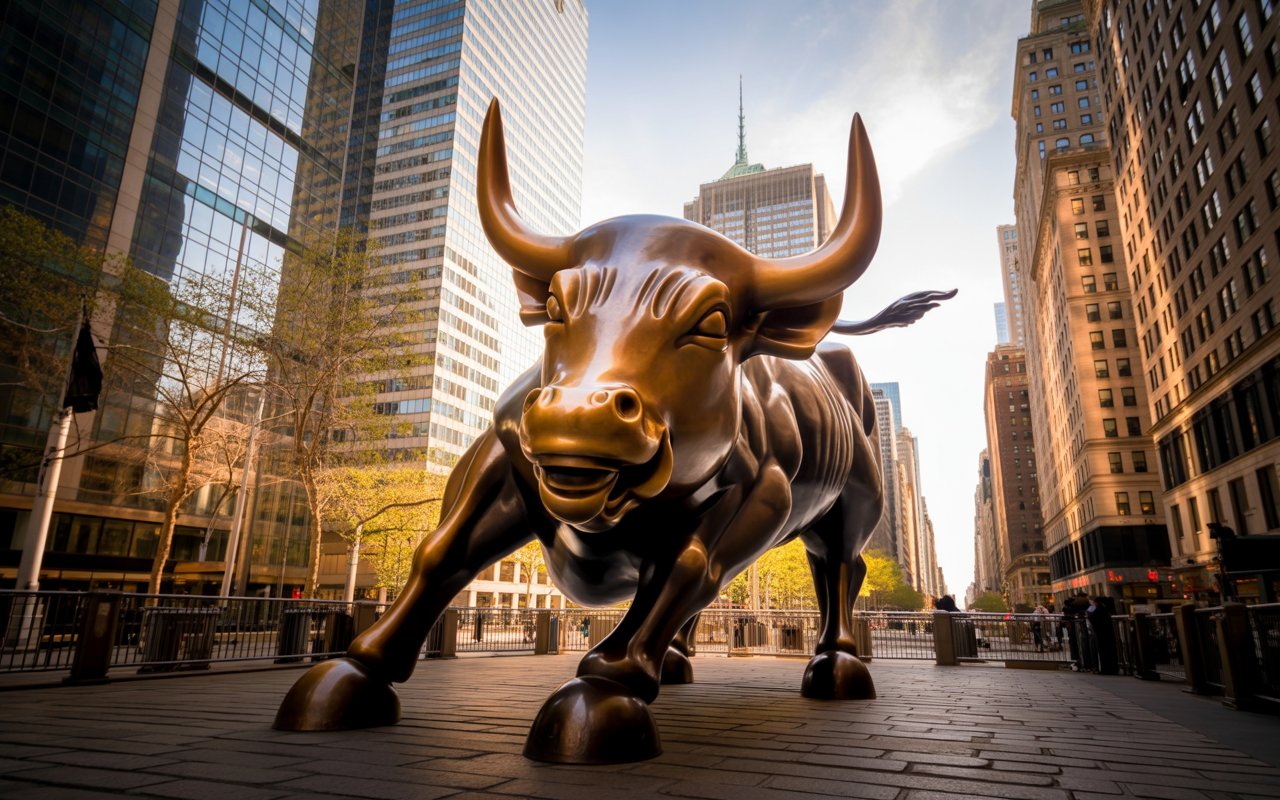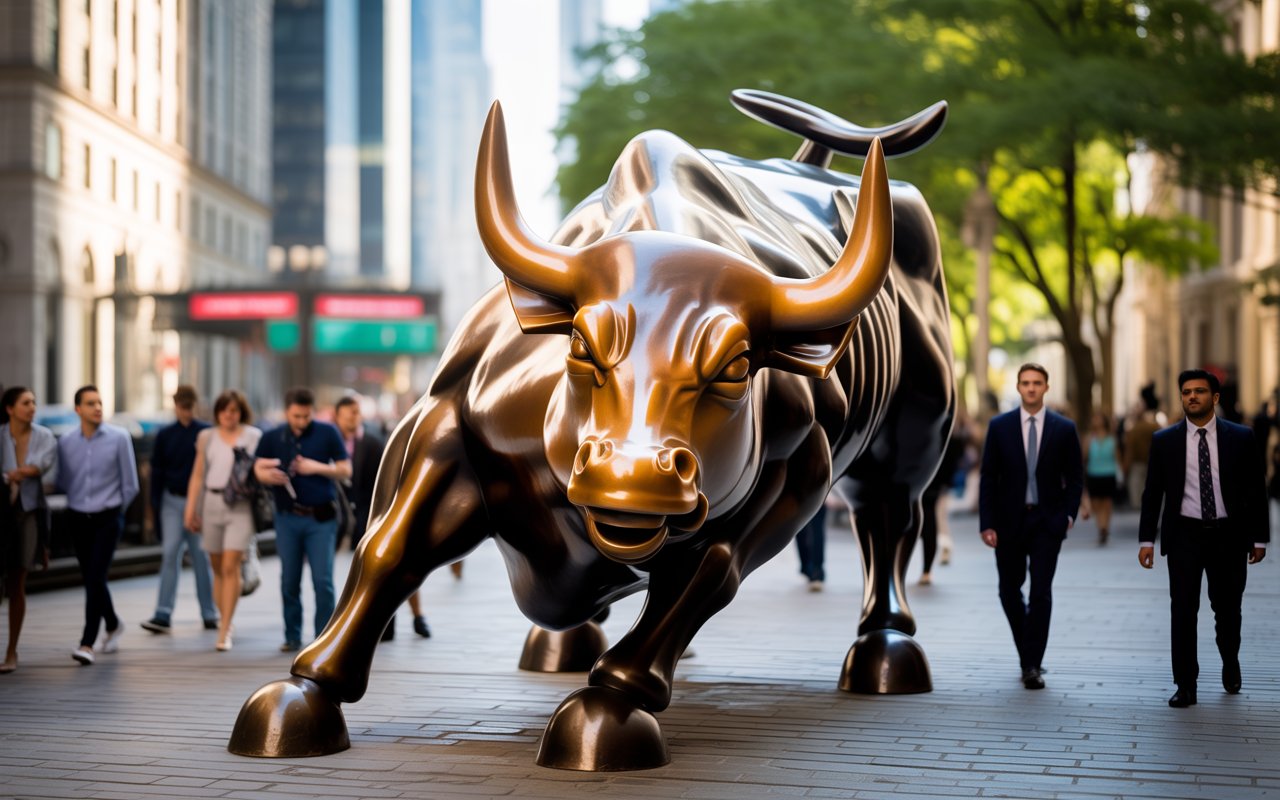If you’ve ever strolled through the Financial District in Lower Manhattan, chances are you’ve noticed a massive bronze bull standing boldly on a cobblestone street. Known globally as the Wall Street Bull or Charging Bull, this iconic sculpture has become far more than just a piece of public art—it’s a powerful symbol of financial optimism, resilience, and ambition.
But have you ever wondered how this bull came to be, why it stands where it does, or what it really represents? Let’s take a deep dive into the story behind the bull that’s captured the world’s attention.
The Birth of a Global Icon
An Unlikely Beginning
The Wall Street Bull didn’t start as a government-funded art project or a planned installation. In fact, its story begins with Arturo Di Modica, a Sicilian-born artist who poured his own savings—over $350,000—into creating the sculpture. He wanted to give something to New York City after the 1987 stock market crash, a time when fear and uncertainty gripped the financial world.
Without any official permission, Di Modica and a few friends secretly installed the 7,100-pound bronze bull outside the New York Stock Exchange one chilly night in December 1989. Imagine waking up to find a massive bull staring you down on Wall Street—it was both shocking and inspiring.
A Bold Statement
Di Modica called the bull a “gift to the American people.” He envisioned it as a message of strength, resilience, and the potential for the market—and the nation—to bounce back. Much like a bull charging forward fearlessly, the sculpture symbolized the unstoppable spirit of progress.
The Symbolism Behind the Bull
Strength and Power
Bulls have long represented strength, determination, and dominance. In financial terms, a “bull market” is a period when prices are rising, confidence is high, and investors feel optimistic. The bull’s muscular build and charging stance embody this energy perfectly.
Prosperity and Growth
The sculpture also reflects prosperity and hope. Positioned with its head down and horns thrust forward, it seems ready to conquer any challenge. This aggressive posture mirrors the ambition and drive found within financial markets and business leaders alike.
Resilience Through Challenges
Just as a bull lowers its head before a powerful charge, the statue stands as a reminder that moments of struggle often precede great leaps forward. It’s an inspiring metaphor not only for investors but for anyone facing setbacks.
From Guerrilla Art to Official Landmark

Removed… Then Reborn
The bull wasn’t welcomed with open arms at first. Within hours of its appearance, city authorities removed it. But public reaction was overwhelming. New Yorkers loved the sculpture—it resonated with their fighting spirit. Due to massive public support, it was soon reinstalled at Bowling Green Park, just a few blocks away, where it stands proudly to this day.
Becoming a Must-See Landmark
Over the years, the Wall Street Bull has transformed from a rogue installation into one of New York City’s most photographed landmarks. Tourists from around the world flock to take selfies with the bull, rub its horns (and other parts) for good luck, and marvel at its imposing presence.
The Artist Behind the Bull: Arturo Di Modica
A Visionary Sculptor
Arturo Di Modica wasn’t just any artist. Born in Vittoria, Sicily, he moved to New York in the 1970s with dreams bigger than life. He set up a studio in SoHo and became known for his bold bronze works. The Charging Bull became his masterpiece—a gift that ultimately defined his career and legacy.
A Personal Investment
Unlike typical public art projects, Di Modica funded and installed the sculpture entirely on his own. He wanted no financial gain or political approval. His motivation came purely from a desire to uplift the city during tough economic times.
Design and Craftsmanship: The Bull’s Mighty Form
Anatomy of Power
The bull stands 11 feet tall and measures 16 feet long. Its body is anatomically exaggerated to highlight its strength: bulging muscles, a lowered head, sharp horns, and a tail curled like a whip. This isn’t just a static sculpture—it’s dynamic, frozen mid-charge, giving viewers the sense that it might spring to life at any moment.
Made to Last
Cast in bronze, the sculpture was built to endure the test of time and the elements. Its smooth, shiny surface—especially on frequently touched areas like the nose and horns—reveals decades of admiration from millions of visitors.
Financial Markets and the “Bull” Metaphor

Bull vs. Bear
In finance, bulls and bears represent two opposing market trends. Bulls push the market upward, while bears pull it downward. The Wall Street Bull captures the essence of bullish optimism—times when investors believe in growth and are willing to take risks.
Cultural Impact
The bull has transcended its literal meaning. It has appeared in countless movies, TV shows, documentaries, and news reports. For many, it’s the face of Wall Street, embodying both the hope and the hubris associated with financial power.
Controversies and Conversations
The Fearless Girl Statue
In 2017, another sculpture made headlines: the Fearless Girl, a bronze statue of a young girl standing defiantly in front of the bull. Installed on International Women’s Day, it was meant to highlight gender diversity in corporate leadership. Many saw it as a symbol of empowerment, while Di Modica argued it changed the meaning of his work, turning the bull from a symbol of strength into one of menace.
The debate sparked global conversations about public art, context, and interpretation, proving that the Wall Street Bull still inspires discussion decades after its creation.
Political and Economic Critiques
Some critics argue that the bull glorifies aggressive capitalism and overlooks inequality and exploitation. For them, the bull isn’t just a symbol of prosperity—it’s also a reminder of excesses that can lead to financial crises. This duality adds depth to its legacy.
The Bull in Popular Culture
A Cinematic Star
From The Wolf of Wall Street to countless travel vlogs, the Wall Street Bull has made its mark in popular culture. Its image is instantly recognizable, often used to depict wealth, ambition, and the high stakes of finance.
A Social Media Magnet
On platforms like Instagram and TikTok, the bull is one of the most geotagged spots in New York. Tourists often mimic its charging pose or rub its nose for “good luck.” Its popularity has turned it into both an artistic marvel and a viral sensation.
Visiting the Wall Street Bull: What to Know

Where to Find It
The sculpture is located at Bowling Green Park, at the intersection of Broadway and Morris Street in Lower Manhattan. It’s easily accessible by subway and is often surrounded by crowds, especially during peak tourist seasons.
Best Time to Visit
Early morning visits offer a more peaceful experience. If you go midday, expect lines of people eager to snap their perfect photo. The area is pedestrian-friendly, so take your time to admire the details up close.
Fun Tradition
Many visitors rub the bull’s horns, nose, and even testicles for good luck. It might sound odd, but this quirky tradition has become part of the experience, leaving certain parts of the statue gleaming brighter than the rest.
The Bull’s Enduring Legacy
A Global Symbol
Beyond New York, replicas and similar bull sculptures have appeared in Shanghai, Amsterdam, and other financial hubs, demonstrating the universal appeal of the charging bull as a symbol of economic strength and ambition.
More Than Just Metal
What makes the Wall Street Bull truly special is not just its craftsmanship but its story, symbolism, and impact. It embodies the ups and downs of financial history, the resilience of people, and the power of public art to inspire and provoke.
Conclusion
The Wall Street Bull isn’t just a statue—it’s a story in bronze. Born from an artist’s vision, embraced by the public, debated by critics, and adored by tourists, it stands as a timeless emblem of power, hope, and resilience. Whether you see it as a symbol of economic strength or a subject for deeper reflection, the bull invites everyone to pause and think.
Next time you’re in New York, stand before it, feel its energy, and remember the journey that brought it there. Just like the bull, we all face moments when we must lower our heads and charge forward.
FAQs
1. Why is the Wall Street Bull famous?
The Wall Street Bull is famous because it symbolizes financial optimism, strength, and resilience. Its daring installation and powerful design turned it into an international icon.
2. Who created the Wall Street Bull?
The sculpture was created by Arturo Di Modica, an Italian artist who self-funded the project and secretly installed it outside the New York Stock Exchange in 1989.
3. Can I touch the Wall Street Bull?
Yes, visitors are allowed to touch the sculpture. Many people rub its horns, nose, and other parts for good luck—a popular tourist tradition.
4. Is the Wall Street Bull still at its original location?
No, the bull was initially placed outside the New York Stock Exchange but was removed by authorities. It was later reinstalled at Bowling Green Park, where it remains today.
5. What does the bull represent in finance?
In finance, a bull represents a rising market, optimism, and investor confidence. The Wall Street Bull embodies this spirit, symbolizing growth and ambition.



